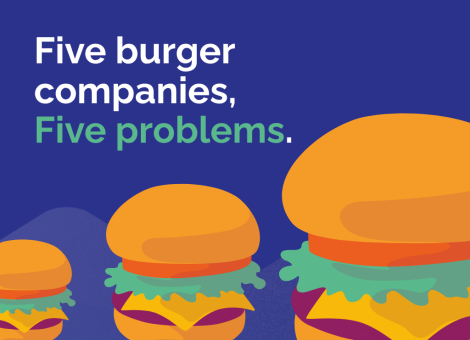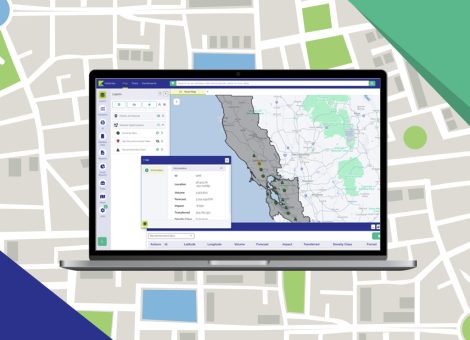How can c-store retailers adjust to the rise of mobile payments?
For many years, with the exception of attended service stations, people had no choice but to leave their cars and go into a kiosk or a store to pay for fuel — but when pay-at-the-pump came on the scene, the fuel and convenience retail industry was dramatically altered.
Customers were delighted with this alternative method of payment, as it served their desire for speed and efficiency. Inside the store, however, convenience retailers suffered. If customers didn’t have to enter the store to pay for fuel, they were less likely to make additional in-store purchases. This led to the rise of several initiatives that would attract customers into the store: promotions linking fuel and non-fuel items, fresh food offerings, different product mixes. Retailers had to create the temptation to enter the store, otherwise, they’d lose a significant amount of business.
As customers’ desire for speed and efficiency continues to increase, payment mechanisms have continued to evolve. With the future of mobile payment options, we’re entering a new phase of convenience for customers and challenges for retailers: Today, customers don’t even need to get out of the car to pay for fuel.
So, what does this mean for the fuel and convenience store industry? How does the future of mobile payments impact c-store retailers?
The Future of Mobile Payments in the Fuel and Convenience Industry
C-store retailers should actually be optimistic. Mobile payments should not be looked at as a threat, but an opportunity.
If you think of mobile payment options as, simply, the means to pay for fuel, then you’re not seeing the bigger picture. Think of the device the payment exists on: How can that device be used as a promotional vehicle? That’s where the true impact of mobile payments will exist for c-store retailers, especially when you consider that mobile devices offer a perfect platform for customer-specific marketing — creating unique offers tailored to individual customers’ needs and desires.
Already, there are many retailers using mobile payments as a form of promotion for both fuel and non-fuel offerings. If someone has a fuel brand’s app and they’re nearing a station, the app might send them a notification that says, “Come in now and get a cent off per gallon” Or, the app might notify the customer of a cross-promotional offer like, “Fill up your tank and get a coffee and bagel for free.” By combining the fueling event with a non-fuel promotion, c-store retailers are responding to the speed and efficiency of mobile payments, while also enticing the customer to shop for more than just fuel.
Mobile payments make the fueling process simpler and quicker for customers — but that doesn’t mean they have to take away sales from in-store purchases. Consider mobile payments an opportunity to promote non-fuel offers in a unique, dynamic and personalized way to customers. But before you rush into this new era of fuel payments, there are a few things you need to consider.
Evolving with Mobile Payments: 3 Things C-Store Retailers Need to Consider
1. How many customers actually buy fuel and non-fuel products together at your site?
Before you invest in a mobile payment platform, you have to establish whether or not there is a sufficient enough relationship between fuel and non-fuel purchases to warrant capitalizing on it. You need to know the actual percentage of customers who buy fuel and non-fuel products together at your site. If 90 percent of your customers never buy anything except fuel, why would you invest in a promotional platform for non-fuel? If the reverse is true, it may be justified to pursue a cross-promotional platform strategy.
With an effective market intelligence platform, you can collect the data and analyze the fuel-store link to understand this relationship between fuel and non-fuel purchases. Ultimately, gaining a deeper visibility into the purchasing patterns of your customers can give insight into demand patterns and other volume-driving elements to inform your holistic strategy.
2. What kind of platform do you need to deliver promotions?
Once you’ve established that there’s a significant relationship between fuel and non-fuel purchases for your customers, you need to decide on the type of mobile payments platform you want to invest in. There are numerous options out there, but the one you choose will ultimately come down to: Who are your customers? How do you need to promote to them? Which incentives will you offer?
Choose a platform that gives you sufficient control and functionality in these key areas. Once you’ve settled on a mobile platform to incentivize volume purchases, a data analytics platform can help you understand the kinds of promotional offers that resonate most with your customers. For instance, if you want to offer a fuel discount, a data analytics platform can help you understand what the optimal discount would be to drive the most volume while minimizing the impact on margins, which brings us to the next consideration: optimization.
3. How do you shape those promotions to be most effective?
After implementing a mobile payment platform, it all comes down to traditional marketing. Ask yourself:
- Who are your customers?
- How are they segmented?
- Which offers will attract them most?
- Which campaigns do they respond to?
- How do you measure the effectiveness of those campaigns?
By understanding your full site value, as well as the needs and desires of your customer base, you can more effectively capitalize on each of the seven elements of fuel and convenience store performance and incorporate those elements into your mobile platform. If you find that a major performance driver for one of your sites is the car wash, you may want to offer a discounted car wash with a fuel purchase to mobile customers, for example.
7 Optimized Elements and Mobile Functionality
Ultimately, with or without a mobile platform, the biggest revenue drivers for your fuel and retail network are the seven elements of fuel and retail excellence: market, location, facility, operations, merchandising, brand, and price. Before investing in the future of mobile payments with a mobile platform, make sure each of the seven elements are up to par — and then incorporate them into your mobile marketing strategy for maximum value to your business.
Want to learn more about what it takes to have a successful convenience retail store? Download our 7 Elements for Fuel and Convenience Retail Success white paper today.|
Read more articles about:
Fuel pricingSubscribe and get the latest updates
You may unsubscribe from our mailing list at any time. To understand how and why we process your data, please see our Privacy & Cookies Policy
Related posts
Location intelligence
Five burger companies, five problems
These burger brands had challenges from international growth to understanding franchise locations cannibalization,...

Location intelligence
Market Optimizer: Demo video
Market Optimizer allows users to strategically grow their network in existing markets while balancing revenue...

